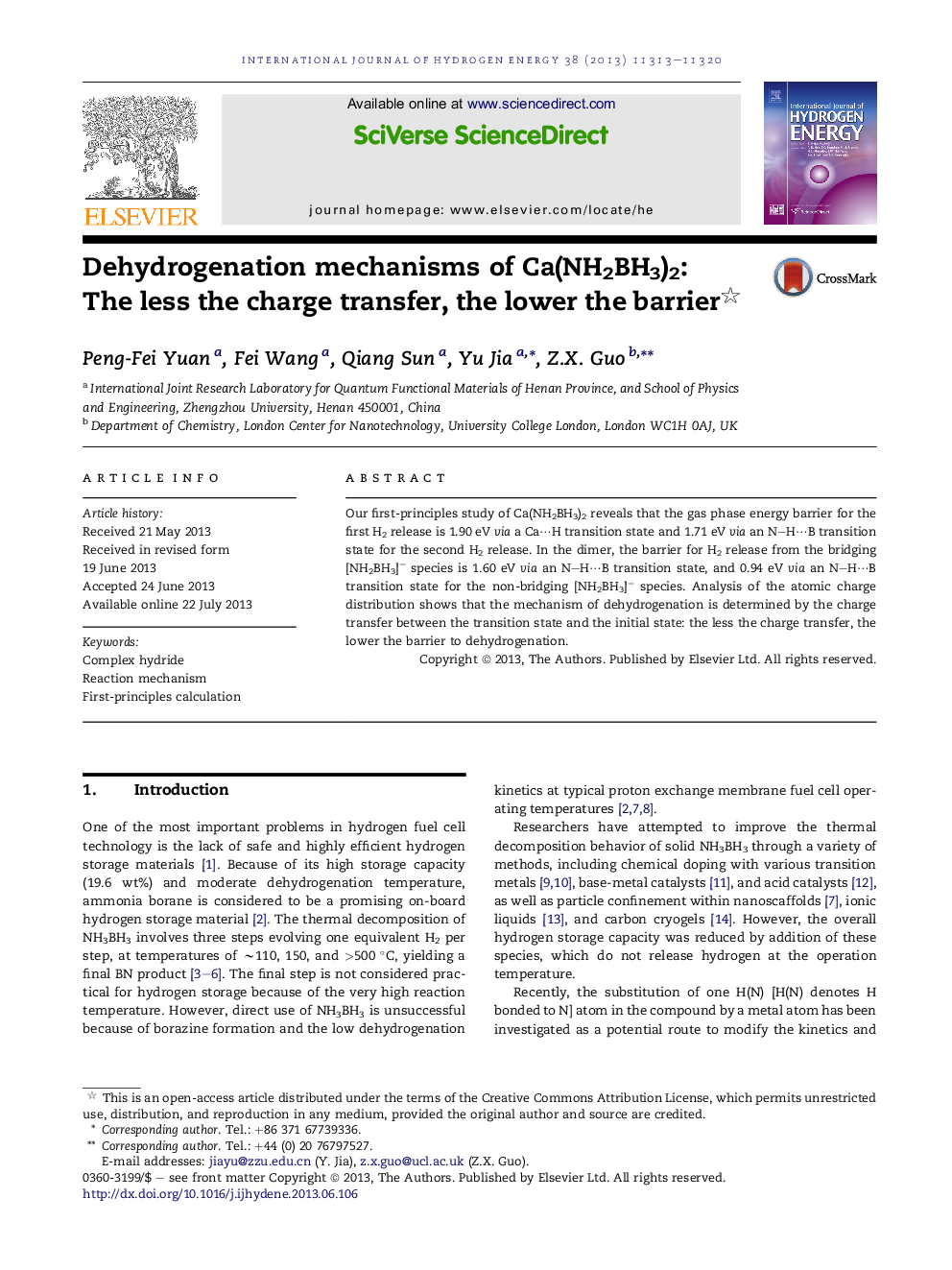| Article ID | Journal | Published Year | Pages | File Type |
|---|---|---|---|---|
| 7721767 | International Journal of Hydrogen Energy | 2013 | 8 Pages |
Abstract
Our first-principles study of Ca(NH2BH3)2 reveals that the gas phase energy barrier for the first H2 release is 1.90 eV via a Caâ¯H transition state and 1.71 eV via an N-Hâ¯B transition state for the second H2 release. In the dimer, the barrier for H2 release from the bridging [NH2BH3]â species is 1.60 eV via an N-Hâ¯B transition state, and 0.94 eV via an N-Hâ¯B transition state for the non-bridging [NH2BH3]â species. Analysis of the atomic charge distribution shows that the mechanism of dehydrogenation is determined by the charge transfer between the transition state and the initial state: the less the charge transfer, the lower the barrier to dehydrogenation.
Related Topics
Physical Sciences and Engineering
Chemistry
Electrochemistry
Authors
Peng-Fei Yuan, Fei Wang, Qiang Sun, Yu Jia, Z.X. Guo,
